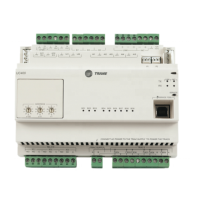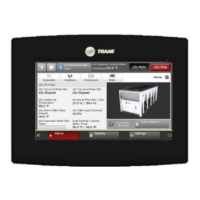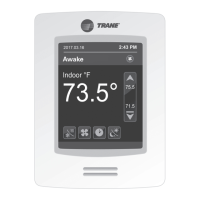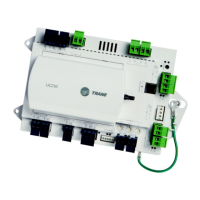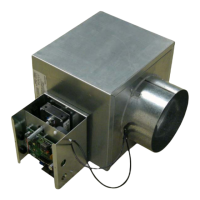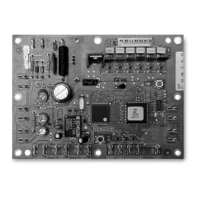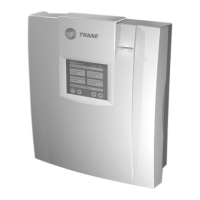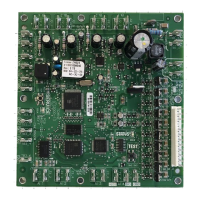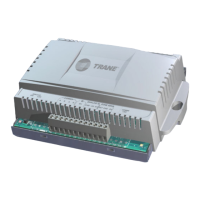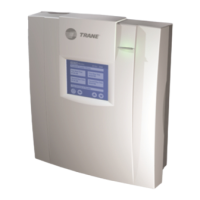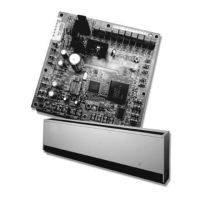Chapter 4 Sequence of operation
48 CNT-SVX05B-EN
• Warm-up/cool-down mode
• Unoccupied mode
• Certain diagnostic conditions
• Low ambient damper lockout
• Anytime the supply fan is Off
Morning warm-up can also be a communicated request from a Trane
Tracer Summit building automation system. When the Tracer AH540/541
controller receives a communicated morning warm-up request, heating
mode is enabled and the outdoor air damper closes. The controller
remains in morning warm-up until a different request is communicated.
Discharge air temperature control: Morning warm-up
If the controller is configured for discharge air temperature control, the
controller requires a space temperature input (hard-wired or communi-
cated) and setpoint input (local, communicated, or default value) to ini-
tiate the morning warm-up sequence of operation. The space temperature
and setpoint inputs are used by the controller to determine if heating or
cooling air should be supplied to the space.
On a transition from unoccupied to occupied, occupied bypass, or occupied
standby, the controller compares the space temperature to the heating
setpoint. If the space temperature is 1.5°F below the heating setpoint,
morning warm-up is initiated. The outdoor air damper closes (or remains
closed) and heat/cool mode is heating.
The morning warm-up control sequence has no time limit upon a transi-
tion from unoccupied to occupied, when the controller is configured for
discharge air temperature control.
Morning warm-up can also be a communicated request from a building
automation system. When the Tracer
AH540/541 controller receives a
communicated morning warm-up request, heating mode is enabled and
the outdoor air damper closes. The controller remains in morning warm-
up until a different request is communicated.
Daytime warm-up
This sequence applies to controllers configured for discharge air tempera-
ture control. The air-handling units must have heating capacity (hydronic
or steam) and a communicated or wired space temperature must exist.
Daytime warm-up allows the controller to automatically change to heat-
ing if the space temperature is below the effective heating setpoint by a
temperature that is more than the configured daytime warm-up enable
differential. Daytime warm-up coordinates the controller heat/cool to
heating, as well as communicates the controller mode of operation to the
duct system for changeover.
The daytime warm-up start setpoint is a configurable temperature below
the effective space heating setpoint. When the space temperature drops to
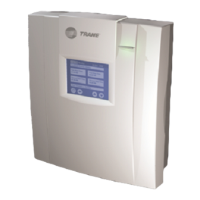
